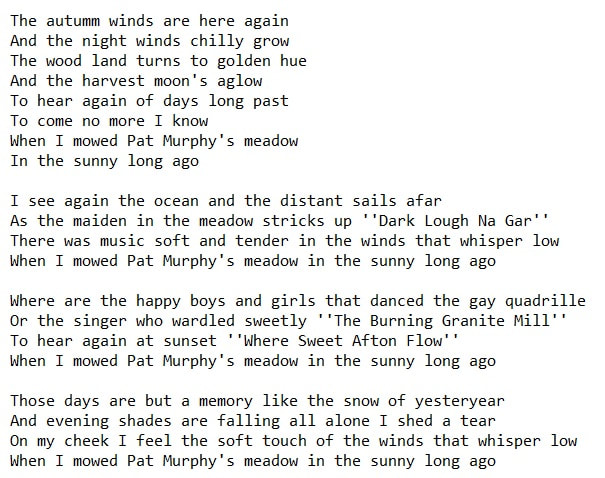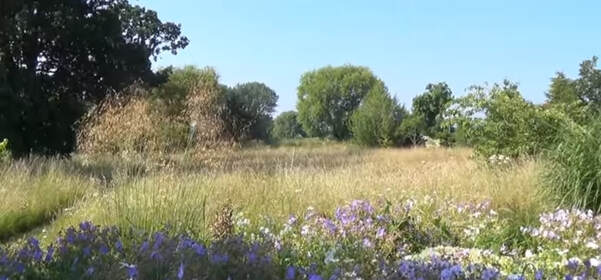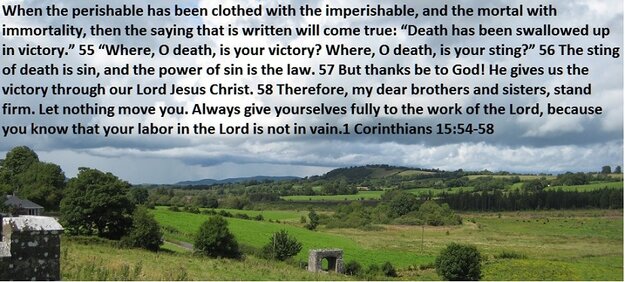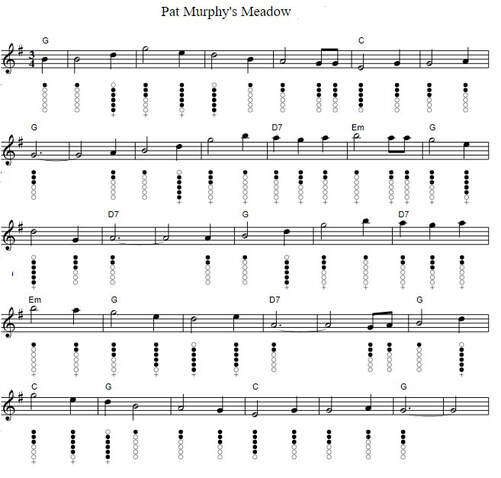When I Mowed Pat Murphy's Meadow, Lyrics And Chords
When I Mowed Pat Murphy's Meadow Folk Song Lyrics And Easy Guitar Chords. Written by J.M. Devine. Newfoundland King's Cove native, it dates back to the 1930s and was originally written as a poem.It was set to music and recorded by Peter McNulty of the famous New York Irish McNally family who also made it famous and by Irish folk singer Johnny McEvoy, it's one of those songs thats more popular in Newfoundland than Ireland. The guitar chords for this ballad are in G Major in chordpro. The fine singer in the youtube video is P.J. Murrihy from County Clare who , along with many other folk singers covered My Father's House [ lyrics and chords ]. The sheet music for tin whistle is included.
The song 'When I Mowed Pat Murphy's Meadow' is a nostalgic and heartwarming piece that captures the essence of rural life and the simplicity of childhood memories. , the song has resonated with audiences for decades and has become an iconic representation of Irish culture and heritage.
The lyrics of the song tell the story of a young boy who takes on the task of mowing his neighbor Pat Murphy's meadow. The meadow, which is described as being 'long and wide, and full of flowers and daisies,' serves as a metaphor for the simplicity and beauty of rural life. As the boy mows the meadow, he reflects on the memories he has shared with Pat Murphy, such as picking blackberries and fishing in the nearby river. Through these memories, the song portrays the strong bond between the boy and his neighbor, who is like a father figure to him.
One of the most striking aspects of the song is its vivid imagery and the way it transports the listener to the Irish countryside. The lyrics paint a picture of a lush green meadow, with wildflowers and birdsong filling the air. This imagery not only adds to the nostalgia of the song but also serves as a representation of the strong connection between the Irish people and their land. The meadow, which is a central element of the song, symbolizes the Irish countryside and its importance in the lives of the people who live there.
Furthermore, 'When I Mowed Pat Murphy's Meadow' is a celebration of the simple joys of life and the importance of cherishing memories. As the boy mows the meadow, he reflects on the happy moments he has shared with Pat Murphy, highlighting the value of human connections and the impact they have on our lives. This message is particularly relevant in today's fast-paced and materialistic society, where people often overlook the simple pleasures in life.
Aside from its nostalgic and sentimental qualities, the song also has a strong cultural significance. It is deeply rooted in Irish folk tradition and has been passed down through generations. The lyrics and melody of the song evoke a sense of Irish identity and pride, making it a beloved piece among the Irish diaspora. Moreover, the song has been recorded and performed by numerous artists, both in Ireland and abroad, solidifying its place as a staple in Irish music culture.
In conclusion, 'When I Mowed Pat Murphy's Meadow' is a timeless piece that captures the essence of rural life, the beauty of human connections, and the importance of cherishing memories. Through its vivid imagery, nostalgic lyrics, and cultural significance, the song has become a beloved representation of Irish heritage and identity. It serves as a reminder to slow down and appreciate the simple pleasures in life, and to hold on to the memories that make us who we are.
The lyrics of the song tell the story of a young boy who takes on the task of mowing his neighbor Pat Murphy's meadow. The meadow, which is described as being 'long and wide, and full of flowers and daisies,' serves as a metaphor for the simplicity and beauty of rural life. As the boy mows the meadow, he reflects on the memories he has shared with Pat Murphy, such as picking blackberries and fishing in the nearby river. Through these memories, the song portrays the strong bond between the boy and his neighbor, who is like a father figure to him.
One of the most striking aspects of the song is its vivid imagery and the way it transports the listener to the Irish countryside. The lyrics paint a picture of a lush green meadow, with wildflowers and birdsong filling the air. This imagery not only adds to the nostalgia of the song but also serves as a representation of the strong connection between the Irish people and their land. The meadow, which is a central element of the song, symbolizes the Irish countryside and its importance in the lives of the people who live there.
Furthermore, 'When I Mowed Pat Murphy's Meadow' is a celebration of the simple joys of life and the importance of cherishing memories. As the boy mows the meadow, he reflects on the happy moments he has shared with Pat Murphy, highlighting the value of human connections and the impact they have on our lives. This message is particularly relevant in today's fast-paced and materialistic society, where people often overlook the simple pleasures in life.
Aside from its nostalgic and sentimental qualities, the song also has a strong cultural significance. It is deeply rooted in Irish folk tradition and has been passed down through generations. The lyrics and melody of the song evoke a sense of Irish identity and pride, making it a beloved piece among the Irish diaspora. Moreover, the song has been recorded and performed by numerous artists, both in Ireland and abroad, solidifying its place as a staple in Irish music culture.
In conclusion, 'When I Mowed Pat Murphy's Meadow' is a timeless piece that captures the essence of rural life, the beauty of human connections, and the importance of cherishing memories. Through its vivid imagery, nostalgic lyrics, and cultural significance, the song has become a beloved representation of Irish heritage and identity. It serves as a reminder to slow down and appreciate the simple pleasures in life, and to hold on to the memories that make us who we are.
The[G] autumm winds are here again
And the[C] night winds chilly[G] grow
The wood land turns to[D7] golden[Em] hue
And the[G] harvest moon's a[D7]glow
To[G] hear again of[D7] days long[Em] past
To[G] come no more I[D7] know
When I[G] mowed Pat[C] Murphy's[G] meadow
In the[C] sunny long a[G]go
I see again the ocean and the distant sails afar
As the maiden in the meadow stricks up ''Dark Lough Na Gar''
There was music soft and tender in the winds that whisper low
When I mowed Pat Murphy's meadow in the sunny long ago
Where are the happy boys and girls that danced the gay quadrille
Or the singer who wardled sweetly ''The Burning Granite Mill''
To hear again at sunset ''Where Sweet Afton Flow''
When I mowed Pat Murphy's meadow in the sunny long ago
Those days are but a memory like the snow of yesteryear
And evening shades are falling all alone I shed a tear
On my cheek I feel the soft touch of the winds that whisper low
When I mowed Pat Murphy's meadow in the sunny long ago
And the[C] night winds chilly[G] grow
The wood land turns to[D7] golden[Em] hue
And the[G] harvest moon's a[D7]glow
To[G] hear again of[D7] days long[Em] past
To[G] come no more I[D7] know
When I[G] mowed Pat[C] Murphy's[G] meadow
In the[C] sunny long a[G]go
I see again the ocean and the distant sails afar
As the maiden in the meadow stricks up ''Dark Lough Na Gar''
There was music soft and tender in the winds that whisper low
When I mowed Pat Murphy's meadow in the sunny long ago
Where are the happy boys and girls that danced the gay quadrille
Or the singer who wardled sweetly ''The Burning Granite Mill''
To hear again at sunset ''Where Sweet Afton Flow''
When I mowed Pat Murphy's meadow in the sunny long ago
Those days are but a memory like the snow of yesteryear
And evening shades are falling all alone I shed a tear
On my cheek I feel the soft touch of the winds that whisper low
When I mowed Pat Murphy's meadow in the sunny long ago
Here's the guitar chords in the key of C
for the version by P.J.
The[C] autumn winds are here a[G]gain
And the[F] night winds chil[C]ly grow
The wood land turns to golden hue
And the harvest moon's a[G]glow
To[C] hear again of[G] days long[C] past
To come no more I[G] know
When [C]I mowed Pat[F] Murphy's[C] meadow
In the[F] sunny long a[G]go.
Lyrics And Chords From N - R
for the version by P.J.
The[C] autumn winds are here a[G]gain
And the[F] night winds chil[C]ly grow
The wood land turns to golden hue
And the harvest moon's a[G]glow
To[C] hear again of[G] days long[C] past
To come no more I[G] know
When [C]I mowed Pat[F] Murphy's[C] meadow
In the[F] sunny long a[G]go.
Lyrics And Chords From N - R




